Nearly all the world’s coffee farms lie between the Tropic of Cancer and the tropic of Capricorn — in a region called the coffee belt. This is the only region with the right climate for coffee to grow and ripen properly. Growing coffee outside of this region is possible, but rare. For farmers who grow coffee at the edges of the coffee belt or beyond, getting as much sunlight as possible for their trees is really important. In this post, we’ll show you how farmers can use the terrain on their farms to their advantage in order to capture more energy from the sun.
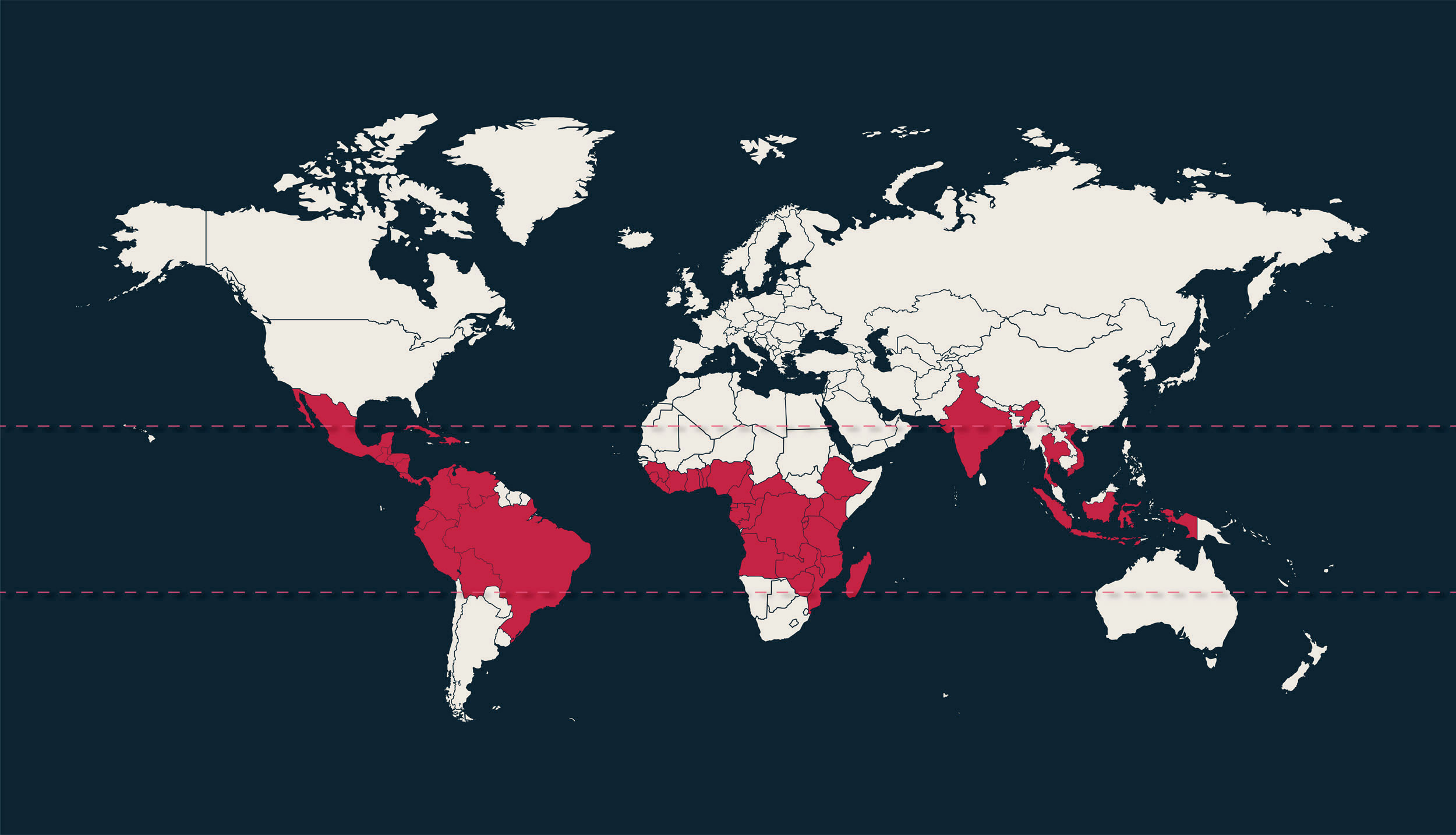 ‘The Coffee Belt’ refers to the region between the two tropics where virtually all the world’s coffee farms are located.
‘The Coffee Belt’ refers to the region between the two tropics where virtually all the world’s coffee farms are located.
Away from the equator, farms receive more sunlight during the summer months than during the winter. This is because the earth is slightly tilted — it spins at an angle of 23.4 degrees.
The earth spins at an angle of 23.4 degrees. When the Northern Hemisphere is tilted towards the sun, it is summer in the Northern Hemisphere, and winter in the Southern Hemisphere.
The earth stays tilted at the same angle while it orbits the sun, which means that for half of the year, the northern hemisphere is closer to the sun, and for the other half of the year, the southern hemisphere is closer to the sun. This is why there are seasons: summertime in each hemisphere happens when that side of the earth is facing toward the sun.
The seasons result from the earth orbiting the sun. For half of the year, the Northern Hemisphere is closest to the sun, and for the other half of the year, the Southern Hemisphere is closer.
The tropics are the places on the earth’s surface that are closest to the sun at the height of summer in each hemisphere. This means that at midday on the tropics, the sun is directly overhead in summer. The Tropic of Cancer is north of the equator, and the Tropic of Capricorn is south of the equator. If you struggle to remember which one is which, just remember that Cancer and Capricorn are in alphabetical order, from north to south.
The Tropic of Cancer is in the Northern Hemisphere, and the Tropic of Capricorn is in the Southern Hemisphere.
Each hemisphere gets more sunlight during summer, for several reasons: Firstly, the day is longer. At the tropics, the difference is quite small: when it’s sunset on the Tropic of Capricorn in midwinter, the nearest point on the Tropic of Cancer, where it’s midsummer, still has about an hour and a half of sunlight left.
Days are longer during summer. When the sun sets on the Tropic of Capricorn in midwinter (red), the same longitude on the Tropic of Cancer (green) still has an hour and a half of sunlight left.
More importantly, when it’s summer in the tropics, the sun is directly overhead at midday. During winter, on the other hand, the midsummer sun is at an angle of about 47 degrees. When the sun is directly overhead, it is more intense, because the sun’s energy is concentrated into a smaller area on the earth’s surface.
During midsummer on the tropics, the sun comes in from directly overhead. During midwinter, it comes in at an angle of nearly 47 degrees.
To understand why the sun’s energy is more intense when it comes from directly overhead, imagine a beam of sunlight 1 kilometre wide. In summer, if you’re right on the tropics, this beam of light comes directly from overhead and hits an area on the earth’s surface that is 1 kilometre across. Assuming that the area hit by that beam of sunlight is a square 1 kilometre on each side, that ray of sunlight covers a total area of 1 km2.
When the earth tilts away from the sun, the same beam of sunlight gets spread out over a wider area. In winter, if you’re right on the tropic, then the midday sun is coming in at nearly 47 degrees from vertical. A bit of maths tells us that at a 47 degree angle, the same amount of sunlight has to cover an area 1.46 km across. So in winter, the same amount of sunlight is spread out over an area of ground that’s 46% larger.
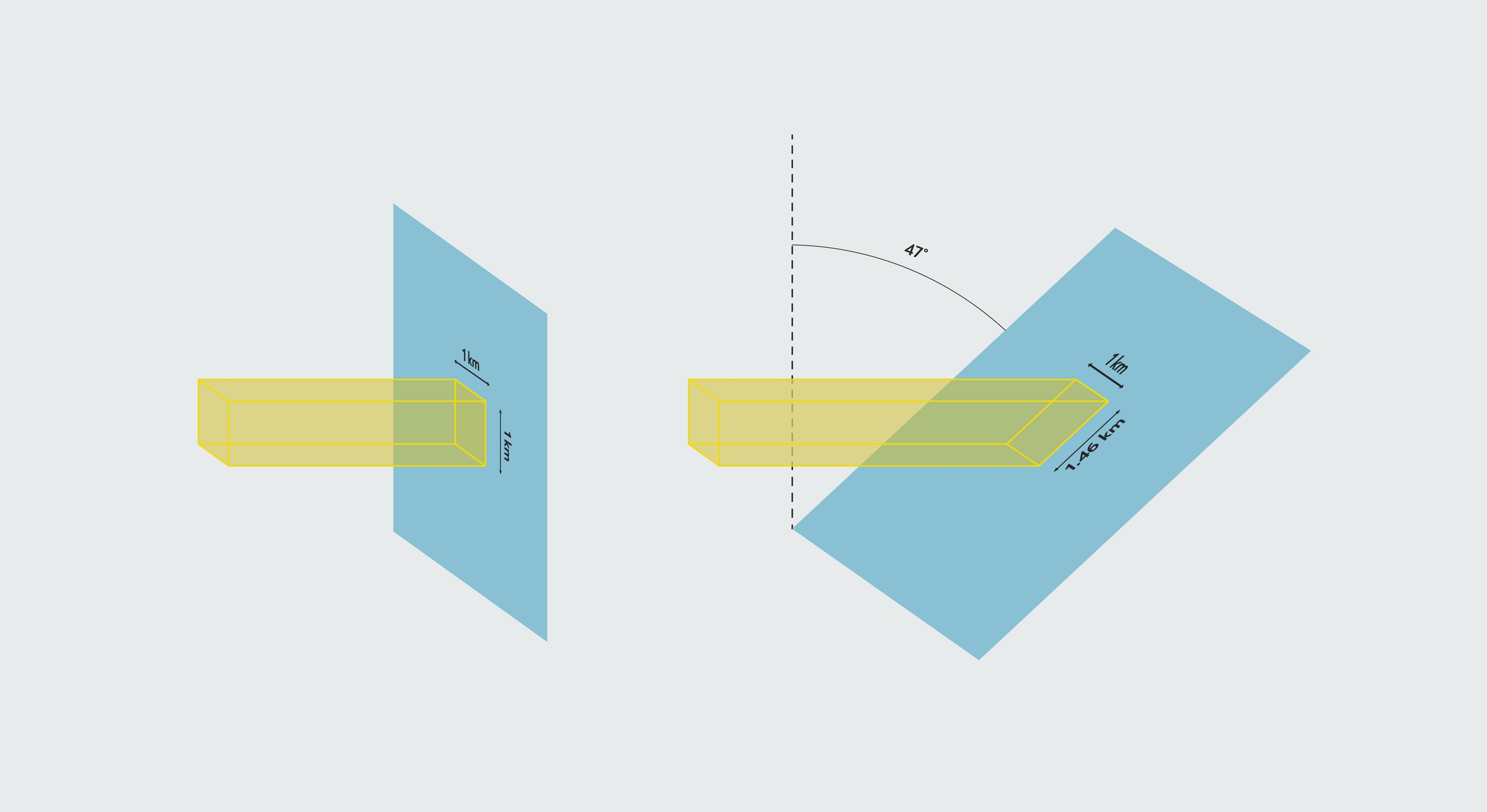 During winter, the sun is at an angle of 47 degrees, and the sun’s energy is spread out over an area of ground that’s 46% larger.
During winter, the sun is at an angle of 47 degrees, and the sun’s energy is spread out over an area of ground that’s 46% larger.
To add to this effect, when the sun comes in at an angle, it also has to pass through a thicker layer of the atmosphere. When sunlight passes through the atmosphere, not all of it reaches the earth’s surface. some of it is scattered reflected, and some is absorbed by the air in the atmosphere itself.
When the sunlight is coming from directly overhead, it has the shortest distance to travel through the atmosphere. When the sunlight is coming in at an angle, it has to pass through more of the atmosphere, so more of that light is scattered or absorbed, and less sunlight energy reaches the surface.
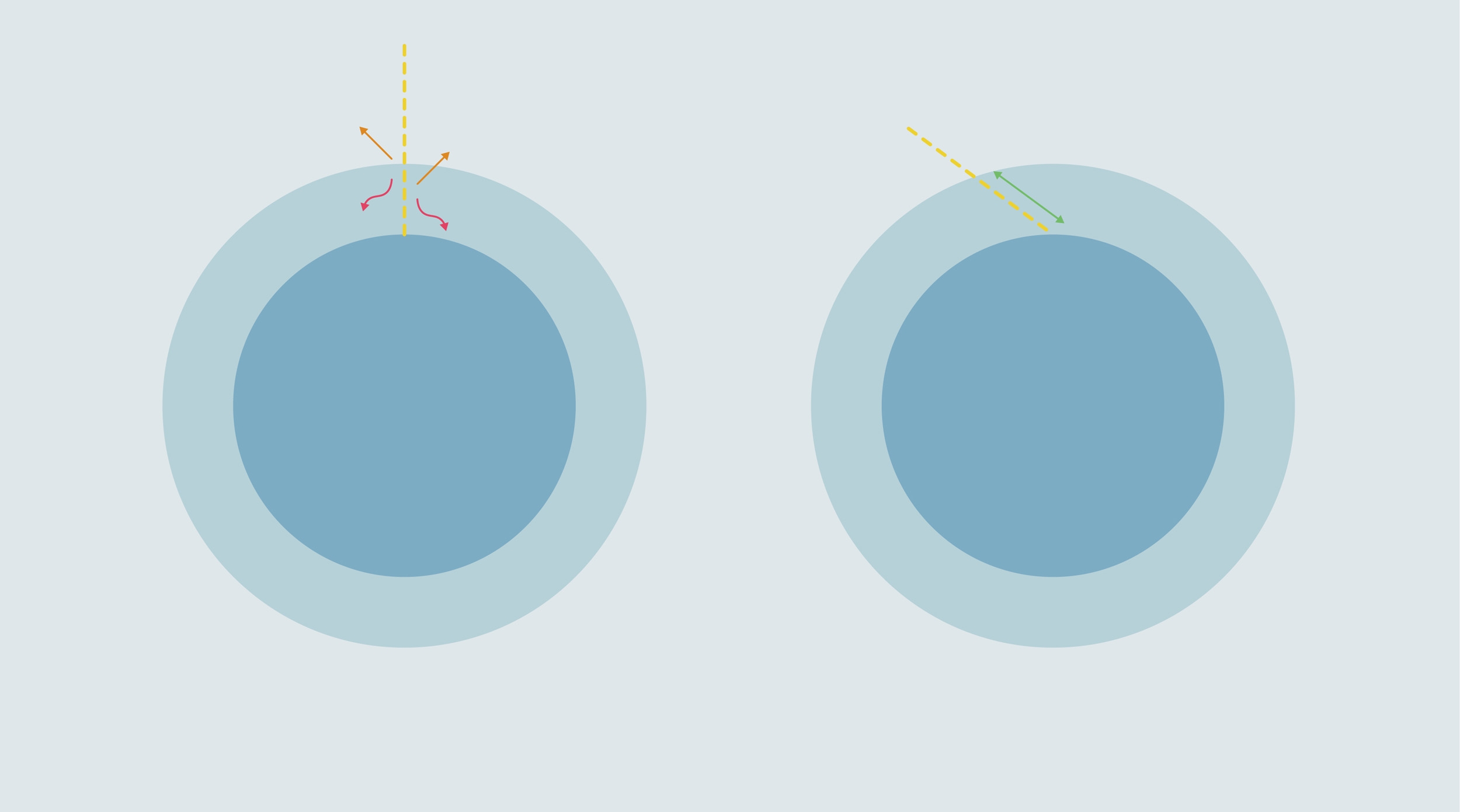 Sunlight is scattered (orange) or absorbed (red) as it passes through the atmosphere. During summer, the sun is directly overhead, so it passes through the atmosphere by the shortest route. During winter, it comes in at an angle, which means it has a longer distance to travel through the atmosphere (green) and more of the sun’s light is scattered or absorbed.
Sunlight is scattered (orange) or absorbed (red) as it passes through the atmosphere. During summer, the sun is directly overhead, so it passes through the atmosphere by the shortest route. During winter, it comes in at an angle, which means it has a longer distance to travel through the atmosphere (green) and more of the sun’s light is scattered or absorbed.
The Tropic of Cancer is closest to the sun in June, and the Tropic of Capricorn is closest to the sun in December. The equator is closest to the sun at the times in between — the equinoxes. This means that wherever you are in the world, the amount of sunlight reaching the earth varies throughout the year. The closer you are to the poles, the bigger the difference is between summer and winter.
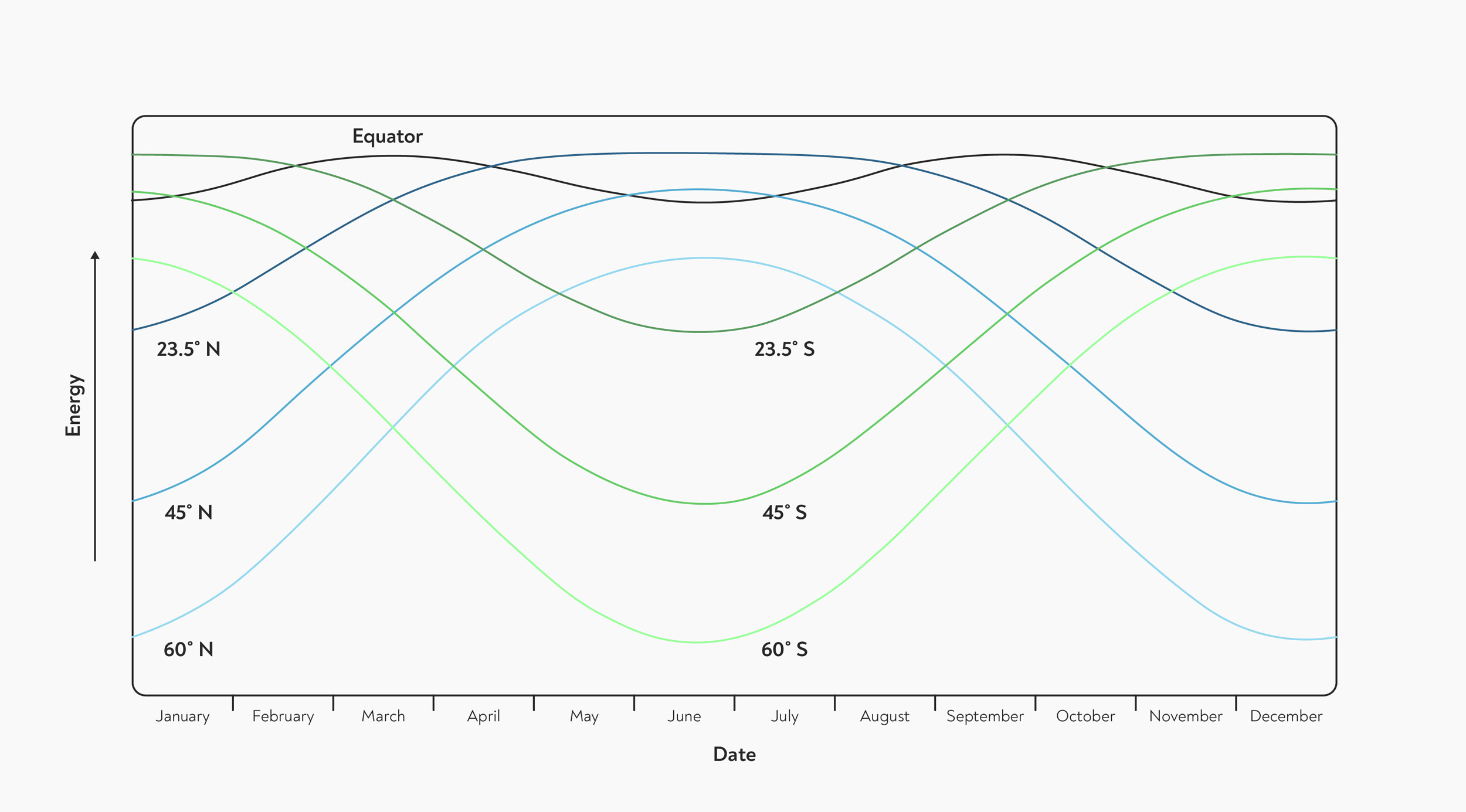 The amount of energy from the sun at reaching the earth at each latitude varies throughout the year. The further from the equator, the bigger the difference between the amount of sunlight in summer and winter.
The amount of energy from the sun at reaching the earth at each latitude varies throughout the year. The further from the equator, the bigger the difference between the amount of sunlight in summer and winter.
There’s one more thing that affects the amount of sunlight reaching the surface throughout the year, and that’s the shape of the earth’s orbit. Instead of being a perfect circle, it’s very slightly elliptical. This means that the earth is slightly closer to the sun in January, and slightly further away from the sun in July. The changing distance between the earth and the sun changes the total amount of solar energy reaching the Earth by about 7% — so it has an effect, but much less of an effect than the earth’s tilt.
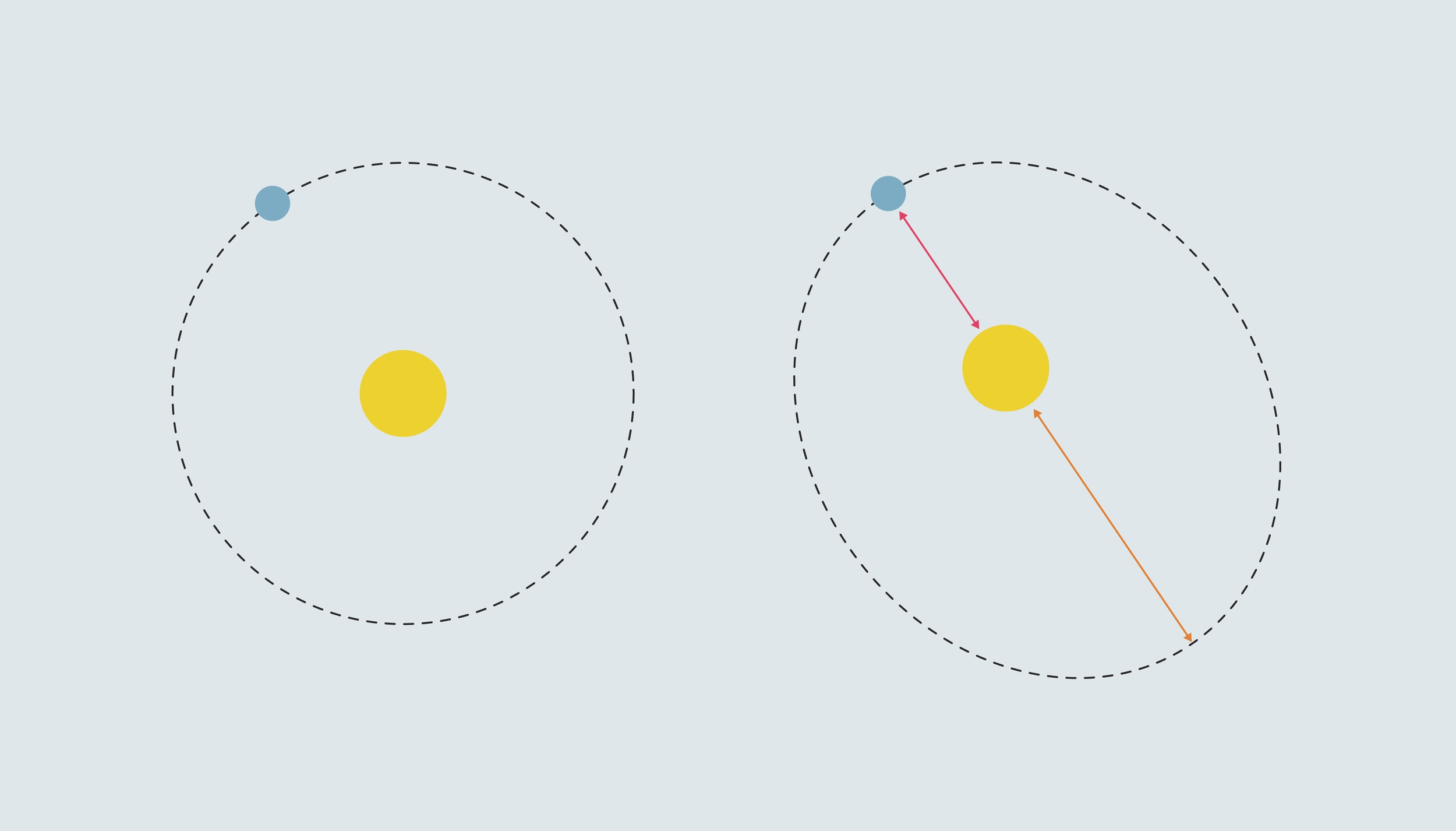 The earth’s orbit is slightly elliptical (diagram not to scale). The earth is closest to the sun during January, and furthest from the sun during July.
The earth’s orbit is slightly elliptical (diagram not to scale). The earth is closest to the sun during January, and furthest from the sun during July.
So what does this mean for farmers? If you want to maximise the amount of sunshine hitting your coffee plants, there are two things that can help. The first is to put your field on a hillside, on a slope that faces towards the sun. That means a south-facing slope in the Northern Hemisphere, or a north-facing slope in the Southern Hemisphere.
In winter, the sun is coming in at an angle. If your field is on a slope that is tilted towards the sun, then the angle of the sun’s rays is reduced, and the same amount of sunlight is concentrated into a smaller area.
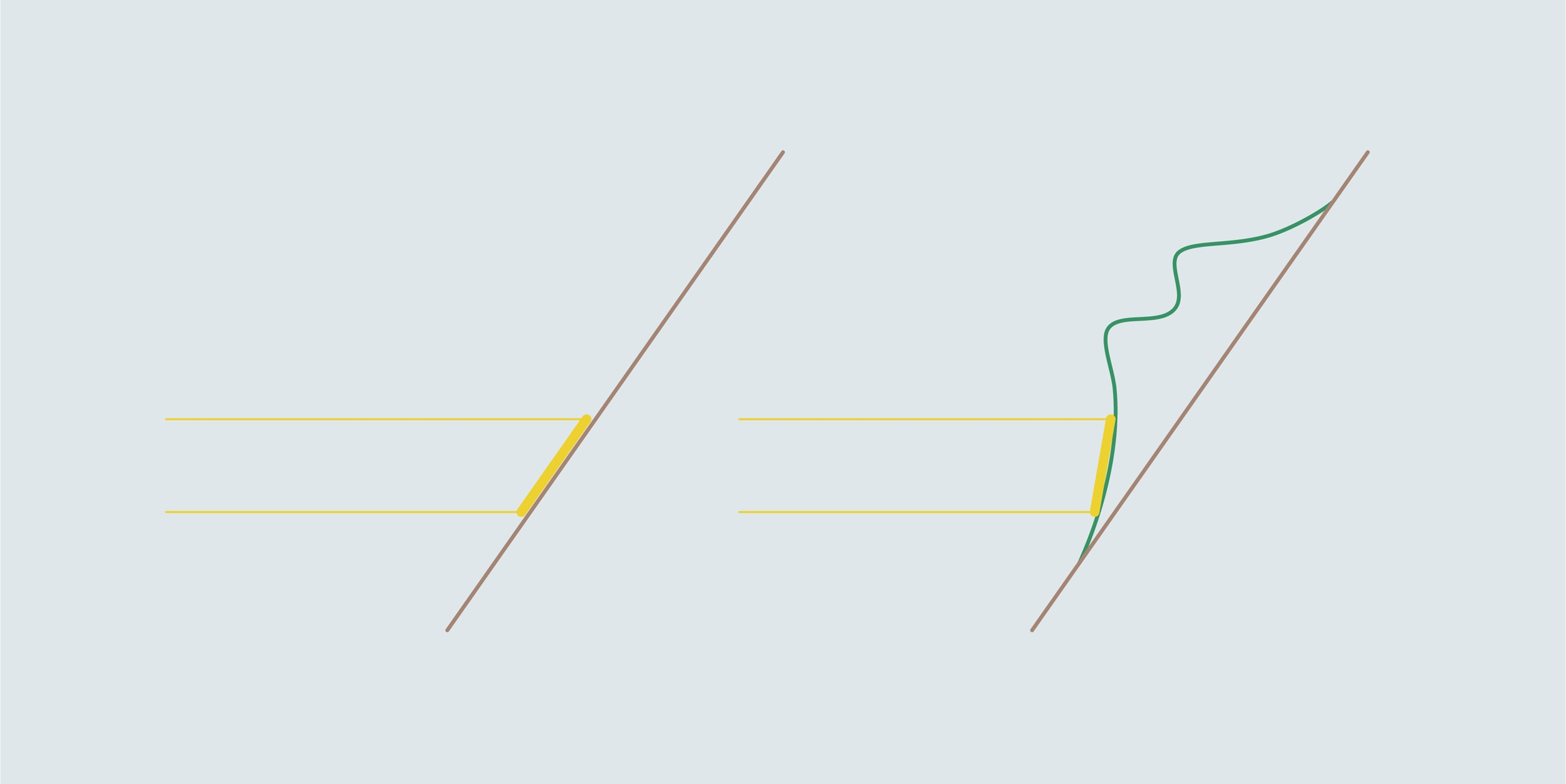 On a sun-facing slope, the sun’s rays are concentrated into a smaller area.
On a sun-facing slope, the sun’s rays are concentrated into a smaller area.
The other thing you can do is put your field higher up a mountain. If your field is higher up, then the sunlight has less distance to travel through the atmosphere, so less of the sun’s energy is absorbed or scattered by the atmosphere — assuming that you don’t have clouds getting in the way.
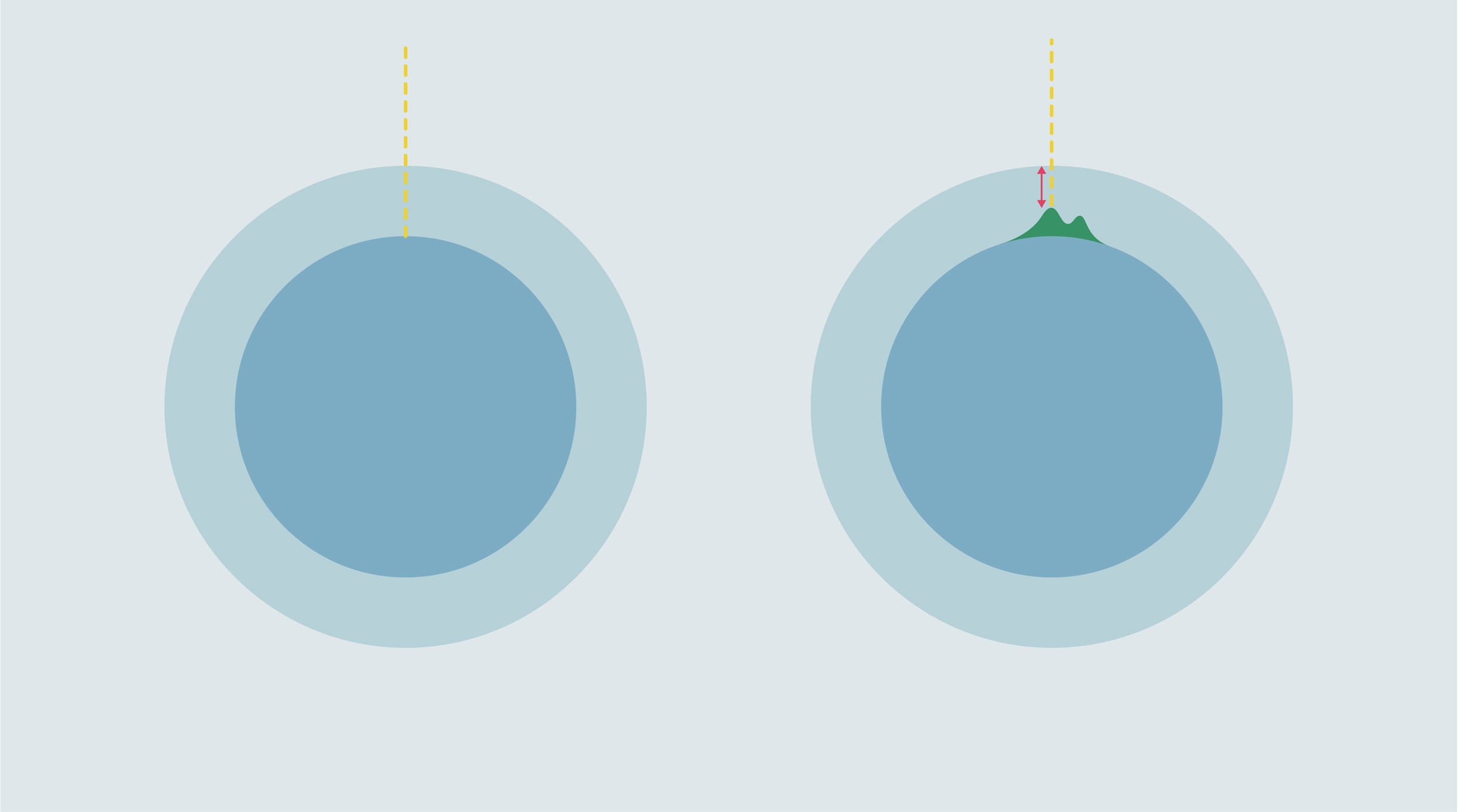 At higher elevations, the sun has a shorter distance to pass through the atmosphere (red), so more of the sun’s energy reaches the earth.
At higher elevations, the sun has a shorter distance to pass through the atmosphere (red), so more of the sun’s energy reaches the earth.
With every 1000 metres increase in elevation, the amount of UV light reaching the earth’s surface increases by approximately 10 per cent (WHO 2002). If you can plant your coffee in a place where there’s more sunlight, then there’s more energy available for photosynthesis, which the plant can use to grow, to produce fruit, and for the fruit to ripen.




Although there isnt much difference between summer and winter near the equator,Does the slope of farms in the hemispheres not cause a problem in summer??How much does this angle affect the intensity of radiation in summer?